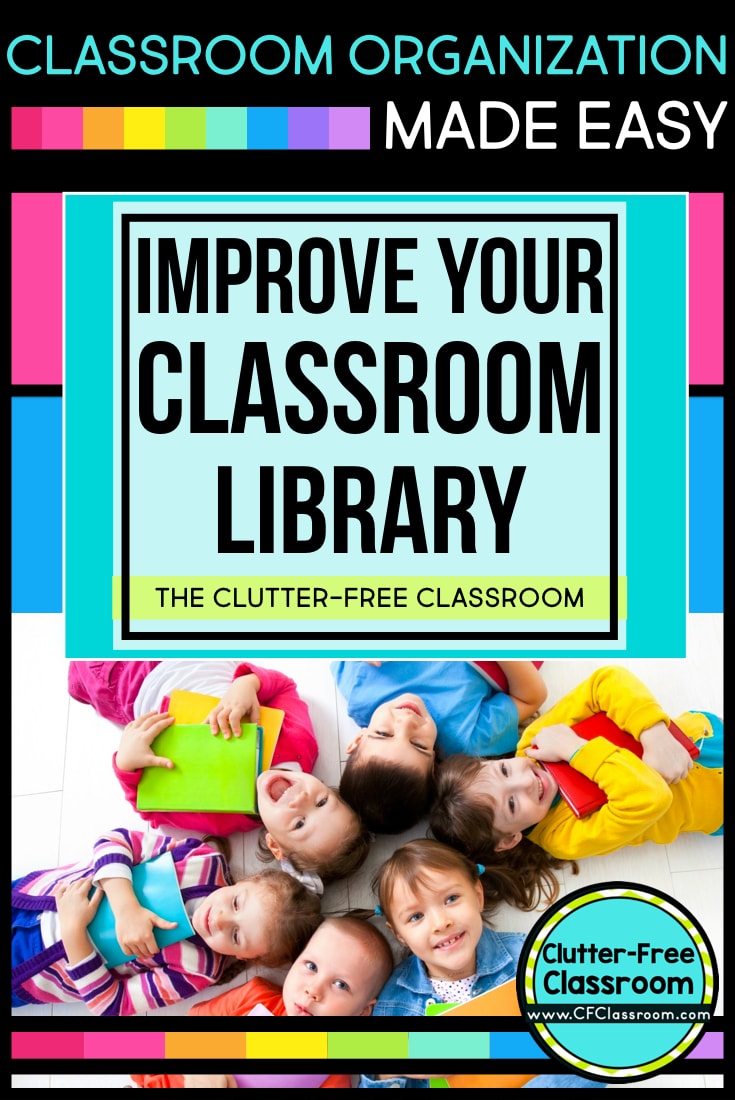The classroom library plays a very important role in elementary classrooms. There are so many different ways to organize it. It can feel daunting! Read below to get some helpful classroom library organization ideas to help you set up your classroom library in a way that truly works!

7 Classroom Library Organization Ideas
Below are some classroom library organization ideas for teachers at the elementary level.
1. Scale Down Your Book Collection
Of course you want a robust collection of children’s literature in your classroom. However, that doesn’t mean that the more books you have out, the better. Scale down your collection of books that are on display at a given time and remove ones that aren’t developmentally appropriate or interesting to students at your grade level.
2. Create Mini Libraries
Break your library up into different sections (picture books, non-fiction, chapter books, and temporary books) and store them in separate areas of the classroom. Instead of one oversized library, offer mini-libraries around the room. This makes it possible for several students to look for new books without feeling crammed, which decreases off task behaviors, lowered noise levels, and prevents behavior problems proactively.
3. Invite Students to Help Sort Your Books by Genre
Regularly use the games and activities in the Teaching Students about Genre Resource to have your students regularly help you sort new books that are brought into the classroom. This provides real world practice of the skills and helps them navigate the library easier throughout the year.
4. Mirror Your Library to a Real Library or Bookstore
Stop leveling the books that are accessible to the students to pick on their own. The real world does not group books by reading levels, so it is important to create an environment that would prepare them for selecting books at the local library and bookstore. Students need ample opportunities to pick books for pleasure, based on interest, and that are both above and below their reading levels.
5. Keep Instructions Materials Separate
Keep the texts that you use for instruction in a separate area for just you to access. Have students select from the appropriate baskets after your reading conferences, but only give them access to “just right books.” Students should be regularly reading books at the level that will help them grow and progress as readers.
6. Celebrate and Showcase New Books
Develop ways to showcase new books so that your students have a list of desired books they know they want to read and aren’t wasting time sifting through your collection. I did this in a few ways. Whenever a new box of books from our class book order arrived, I would gather everyone together in our class meeting space and make a production out of unboxing the books one at a time. I also continued to regularly check books out of the town library that I would bring to school in a canvas bag. There was always great excitement when they noticed I had a full canvas bag next to my desk in the morning. I always kept these books standing up along our back shelf with the cover facing out.
7. Rotate Your Books on Display
Rotate books throughout the year. Books should be constantly changed out to reflect seasonal interests and units of study. Keeping things new and fresh makes your friends want to get their hands on the literature before it is gone. Think about supply and demand. If books are only available for a short time, students will want to get their hands on them fast!
In closing, we hope you found these classroom library organization ideas helpful! If you did, then you may also be interested in these posts:
- Classroom Organization Ideas for a Small Classroom
- Back to School Read Alouds for Elementary Teachers
- Classroom Library Checkout Systems for Classroom Teachers




